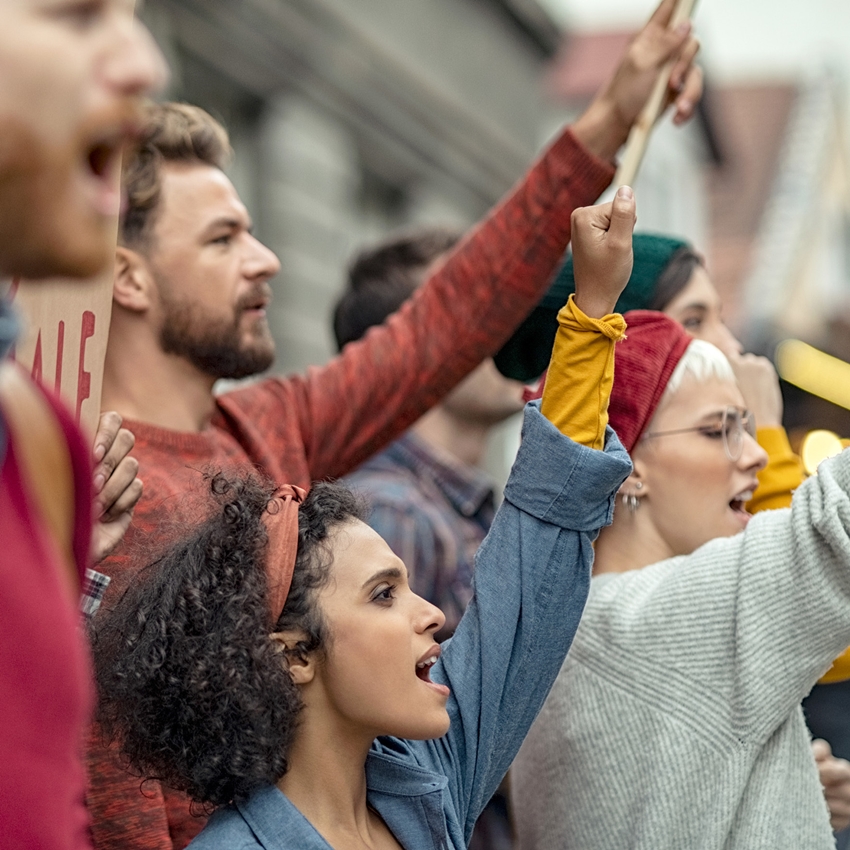During the early days of the pandemic, a new phrase entered our lexicon: essential workers. Defined by the U.S. Department of Homeland Security, “Essential workers are those who conduct a range of operations and services that are typically essential to continue critical infrastructure operations.”
Many retail employees fit that definition including those working in grocery stores, pharmacies, medical supply stores, convenience stores, pet stores, hardware stores, office supply stores, liquor stores and e-commerce operations like Amazon. Most essential retail businesses gave some form of temporary hazard pay to employees and retail CEOs heaped praise on them.
In 2020, the CEOs of the top 250 corporations in the U.S. made on average $24.2 million or 351 times more than the typical worker, according to the Economic Policy Institute. In another study by the Institute for Policy Studies, some 80 percent of S&P 500 companies pay their CEOs over 100 times more than their average worker.
All in this Together
“This isn’t business as usual, and it’s a time of great stress and uncertainty. It’s also a moment in time when the work we’re doing is its most critical,” wrote Jeff Bezos in an open letter to Amazon employees. “I’m not alone in being grateful for the work you are doing. Your efforts are being noticed at the highest levels of government. There is no instruction manual for how to feel at a time like this, and I know this causes stress for everyone. Please take care of yourselves and your loved ones. I know that we’re going to get through this, together.”
Starbucks, not deemed essential initially, was one of the first to open doors, or more accurately its drive-thru windows, as the initial crisis abated. “You can trust that while we are on this journey together, we will always be one Starbucks, grounded in the belief that partners (employees) are the heartbeat of this company,” wrote CEO Kevin Johnson to the company employees.
Starbucks founder Howard Schultz reinforced the message praising its Starbucks partners for their “servant leadership,” words more akin to pastors in the pulpit than the head of a company. But Schultz has always played the higher calling card.
He wrote, “I can’t help but think how the success of our company has come from a simple truth. That when we exceed the expectations of our people, they in turn exceed the expectations of our customers. It remains my greatest aspiration that Starbucks partners will stay together carrying forward the legacy of working together with compassion and with love and providing a welcoming and uplifting third place for one another and our customers.”
Cynics could say that Schultz may have drunk one too many of his massively sweet caramel macchiatos. But how many retail leaders communicate empathy and solidarity with their workers? In any case, he wasn’t alone; across retail America, leaders were out front waving virtue flags for their frontline employees.
The sad part of this story is that it took a global pandemic for retail CEOs to realize how much they and their customers depend upon their frontline workers. And sadder still is how quickly they forgot as the pandemic lightened.
But not surprisingly, the workers haven’t forgotten. Across the world, we see the evidence — from Louis Vuitton factory workers stepping out of the production line and retail workers unionizing at apparently woke corporations including Amazon, Starbucks, Apple, REI and no doubt more to follow.
Reality Gaps
There is a rising tide of unrest among the ranks of the working class. Lower-level workers – as in lower in the corporate hierarchy and the pay-and-benefits scale – are questioning their value vis a vis the recognition they receive for the critical work they do for their employers.
In 2020, the CEOs of the top 250 corporations in the U.S. made on average $24.2 million or 351 times more than the typical worker, according to the Economic Policy Institute. In another study by the Institute for Policy Studies, some 80 percent of S&P 500 companies pay their CEOs over 100 times more than their average worker.
There haven’t always been such pay scale inequities. Back in 1978, CEOs made only 31 times the typical worker. It rose to 61 times in 1989. But today it is off the charts. CEO compensation grew 940 percent from 1978 to 2019, as compared with only 12 percent for the typical worker.
By comparison, the nation’s 3.4 million retail cashiers had a median pay of just $12 per hour or $25,000 per year in 2020, according to the Bureau of Labor Statistics. The 3.7 million retail salespeople made a shade more, $13 median amounting to $27,000 per year. Both are at or under the federal poverty level for a family of four.
These workers are trapped in a low-wage corporate ghetto and falling further behind as inflation reaches 10 percent and the amount of work they are expected to do grows as retail employment ranks thin. But the employers they work for are making money hand over fist.
Retail sales nearly doubled since 2000, growing from $2.98 trillion in 2000 to $5.6 in 2021. You’d think retailers could squeeze a little bit more out of their takings to provide for their employees whose essential work keeps the company prospering and contributes to making company owners, senior executives and investors rich.
In the current cultural dialogue, a fracture line has become the fault line distinction between inequality and inequity. No matter how you look at it, the pay scale for retail workers is neither equal nor equitable.
As the cultural conversation calls for equity, it’s going to become a trap for many retailers. Why do they reward their C-suite executives so handsomely while being so objectively stingy to their frontline employees who do their heavy lifting? Those employees are beginning to hold their employers’ feet to the fire as they rightly should. And many are just walking out the door.
Amazon Has Lots to Answer For
Amazon, the nation’s second-largest employer with just under one million, after Walmart with 1.6 million U.S. workers, was one of the first to get employee dissatisfaction pushback. Amazon workers at its Bessemer, AL facility tried to organize under the Retail, Wholesale and Department Store Union (RWDSU). RWDSU represents about 100,000 workers nationwide in retail, grocery, pharmacy, food service, food processing and warehousing industries primarily, including retail workers at Macy’s, Bloomingdale’s, Zara, H&M, Duane Reade, Stop & Shop, and more.
Amazon fought the unionization effort hard and was able to swing the vote in its favor. Then allegations of corporate misconduct arose. After the National Labor Relations Board (NLRB) ruled Amazon had violated labor laws, a second vote is now ongoing. Currently, workers in another Amazon warehouse on Staten Island, NY have filed a petition with the NLRB to unionize under the Amazon Labor Union, a labor group made up of current and former Amazon employees. The Teamsters also have their eyes set on unionizing Amazon workers.
According to reports, Amazon has a lot to answer for when it comes to fair treatment of its employees. Among the concerns are workplace safety, excessive worker surveillance, overwhelming workloads, demanding work hours, not providing adequate work breaks and low-wages relative to similar companies. And the company has faced lawsuits alleging racial discrimination, sexual harassment and retaliation against workers who speak up.
Some of the most egregious actions include:
- Under reporting Covid cases to health authorities. California sued Amazon and the company agreed to pay $500,000 to the state for misreporting. A similar suit was filed in New York State alleging failure of the company to comply with workplace safety rules during the pandemic and retaliating against employees who called out the company on their practices. That case is pending.
- Withholding Amazon Flex drivers’ tips. The FTC filed suit and Amazon agreed to settle the case resulting in an average of $422 sent to those affected. But one driver was shorted more than $28,000 in tips.
- Banning cellphones on the warehouse floor. This ban may have resulted in the deaths of six employees in an Illinois warehouse when a tornado struck. The company has since reversed that policy. But during that same storm, a delivery driver in the area was threatened with losing her job if she didn’t keep delivering.
Starbucks’ Workers Jump to the Front of the Line
Starbucks is much smaller than Amazon with some 350,000 employees, but its workers are way ahead of Amazon in unionizing.
Mere weeks after its first corporate store in Buffalo, NY joined the Workers United union, employees in 54 stores in 19 states are on the unionizing track, according to NPR. Votes have already been held in three other New York stores, one of which rejected while two joined. And a store in Mesa, AZ is currently holding an election.
With nearly 9,000 company-operated Starbucks stores nationwide, workers have a long way to go to get their message heard as they argue for better pay, more training and adequate staffing in stores. Before the Buffalo, NY vote, Starbucks raised its starting pay to $15 per hour with projections that by summer 2022 the average pay will reach $17. But that didn’t turn the tide and the more than 100 Buffalo workers voted for the union.
That union victory in Buffalo was described by NPR’s Alina Selyukh as a “watershed moment for the company,” and added the high profile of Starbucks among Americans will help raise awareness of the power of unions to help the friendly faces behind the counter, not just at Starbucks but at other retailers as well. Labor experts also say because of its large number of stores, Starbucks will have a harder time fighting against unionizing each individual store.
REI Workers Want a Living Wage
With momentum growing, over 100 employees at the REI store in Soho, Manhattan have filed to join the RWDSU. Despite REI’s reputation as a progressive retailer – for example it shuts all its stores on Black Friday so employees can enjoy the day with family and friends– its NYC workers are demanding full-time status and benefits, more Covid safety protections and guaranteed hours after the holiday sales season.
By an overwhelming 86 percent majority, the store’s staff voted to be represented by the Retail, Wholesale and Department Store Union.
While a store employee said new store hires make just under $19 per hour, that’s below the $22 per hour the MIT wage calculator says is a “living wage” for a single adult in the area. But it’s hard to imagine the quality of life for someone making less than $700 per week in NYC.
Apple Workers Join the Party
This past Christmas Eve, an internal Apple Together group representing 100,000 U.S. Apple retail employees called for everyone to walk out. Only a tiny portion of retail workers participated, but widespread dissatisfaction is growing within the company’s ranks. And the Washington Post reports that at least eight stores have either filed or plan to file petitions to join a union.
Apple’s sales grew over 50 percent from 2017 to 2021, reaching $378 billion last year. Retail employees claim their wages haven’t even kept pace with inflation. And the feeling of inequity is even greater at the store level because Apple engineers and tech workers in Cupertino headquarters are paid well and “showered” with benefits.
Apple has approximately 65,000 retail workers at its nearly 300 stores nationwide. The Post reports the average retail sales associate earns less than $31,000 per year. In an open letter to management posted on the Apple Together site, employees stated, “We make Apple, Apple,” claiming a major portion of the company’s retail success is due to their passion and expert knowledge of the company’s products. “Apple prides itself on its commitment to diversity, equity and an environment where everyone can do their best work. But Apple has fallen short of this goal for so many of our current and former teammates. It’s time to think equitable at Apple – together,” the group stated.
Power to the People
And that, in a nutshell is the rub. All these retailers, and many more, go on and on with their high-minded mission and purpose. They pontificate loudly about their environmental, social and governance principles, but when it comes down to how they treat their workers, they don’t necessarily practice what they preach.
“Some of the more progressive employers are also some of the worst union busters that workers have faced,” shares Chelsea Conner, a RWDSU spokesperson, speaking from Alabama where she is helping organize the Amazon vote.
While age-old economic issues drive much of the unionization efforts, Conner reports that the pandemic has brought other work/life concerns to the forefront. “When you look historically at people’s ages and demographics, it’s a reflection of the times we live in. Our labor laws have failed a lot of us. People are saying ‘enough is enough.’” She continues, adding that each of the contracts the RWDSU negotiates is unique to the specific issues of the companies’ employees.
“Many workers join these progressive employers for the ideals they stand for, but there are certainly workers in less progressive companies who are calling us for help too,” she says. “It’s a grassroots movement where workers are calling on their companies to be good corporate citizens. Too many aren’t.”
Retailers don’t need reminding that the ideals they stand for that attract employees are also the ones that attract their customers. When workers call out their employers’ hypocrisy and demand that something be done about it, it affects customer loyalty. Offending retailers can’t keep those voices silent for long. It’s about time for a figurative “Come to Jesus” reckoning for retailers that may not be living up to what they preach.




